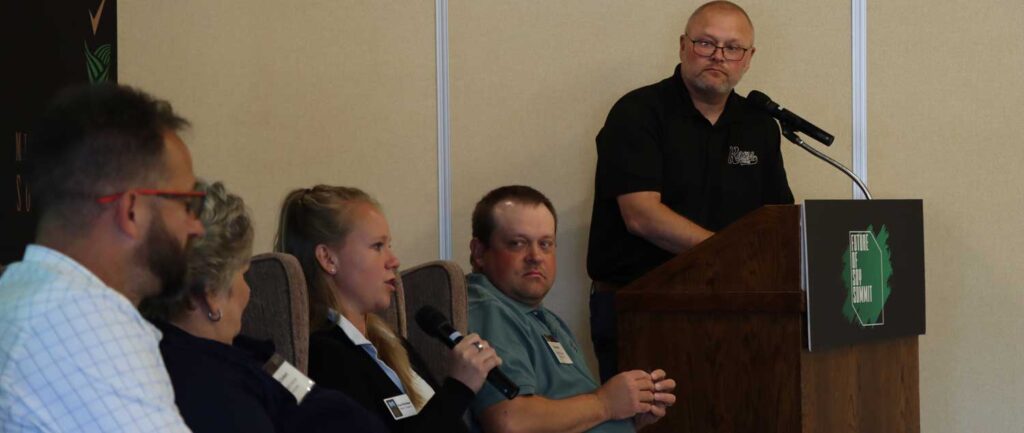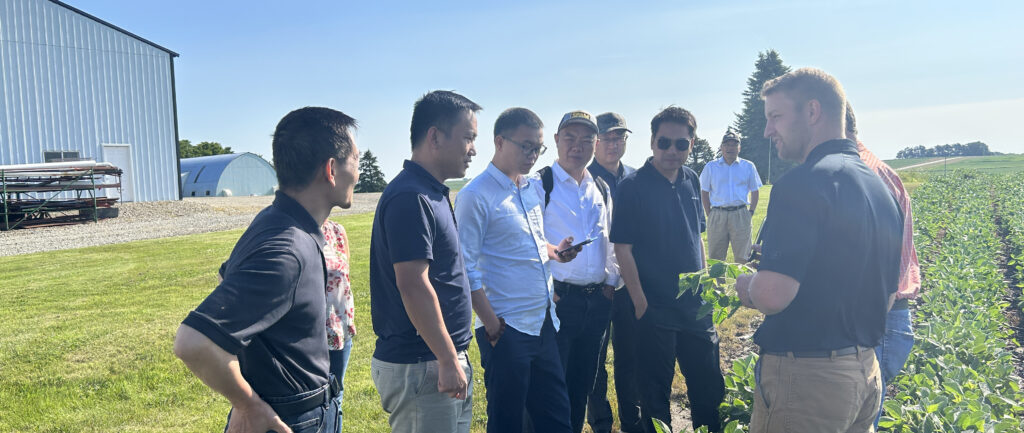Palmer amaranth (Amaranthus palmeri) is a fast-growing and competitive annual plant that is native to the southwestern United States and has spread aggressively adapting to a variety of climates. It has developed resistance to multiple classes of herbicides and different modes of action, making it difficult and expensive to control.
Once established, yield losses have been reported up to 91 percent in corn and 79 percent in soybeans, with an estimated increase of management cost per acre ranging from $15 to $30. Palmer amaranth was added to the Minnesota Noxious Weed List in 2015 and to the Minnesota Prohibited Weed Seed List in 2016.
Palmer amaranth was confirmed in Minnesota for first time in September 2016. The Minnesota Department of Agriculture (MDA) was able to determine that the source of this infestation was related to contamination of a single seed source that was planted at 30 locations owned by 13 landowners in Yellow Medicine and Lyon counties. The total acreage associated with this infestation is less than 200 acres. MDA is currently completing its investigation regarding the seed source and is determining enforcement options.
Upon confirmation, MDA, University of Minnesota (UMN) Extension, United States Department of Agriculture (USDA) and local crop consultants began assessing the extent of Palmer amaranth establishment at the 30 known locations in both counties. MDA and UMN Extension began working immediately on a cooperative strategy to deal with these infestations. Initial treatments began shortly after Palmer amaranth was found. Palmer amaranth plants, including seedheads, were incinerated to reduce establishment and spread by seed. Site-specific eradication plans have also been established for each site and MDA is planning to meet with landowners over the next few weeks to coordinate 2017 eradication efforts. Eradication will include field scouting, pre and post-broadleaf herbicide applications and fire management.
MDA has declared an agricultural emergency, allowing for access to emergency funds to help with increased seed monitoring efforts and eradication activities in 2017. To date, MDA has been able to use these funds for site assessments, 2016 fall burn treatments, development of a single-seed DNA test to accurately determine Palmer amaranth seed in samples, development of 2017 eradication plans, and increased seed monitoring at vendor and field planting locations.
MDA has also been actively working with the Minnesota Board of Water and Soil Resources to coordinate sampling of seed components and mixes that are used for conservation and pollinator plantings. Through this process, MDA has been able to determine that Minnesota’s native seed industry is a leader in the nation at providing quality seed for sale within the state, and they are very committed to ensuring seed is sourced locally and screened for purity. Growers that have questions about Palmer amaranth or the efforts to eradicate this species in Yellow Medicine and Lyon counties should contact MDA, UMN Extension, USDA or their local crop consultant.







